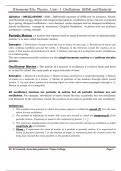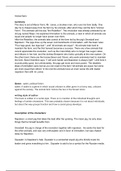Samenvatting
Summary Oscillations (SHM)
- Vak
- Instelling
Syllabus : OSCILLATIONS : SHM ; Differential equation of SHM and its solutions, Kinetic and Potential energy, Simple and compound pendulum; oscillations of two masses connected by a spring; damped oscillations – over damped, under damped and un-damped oscillations; forced oscillations - con...
[Meer zien]




